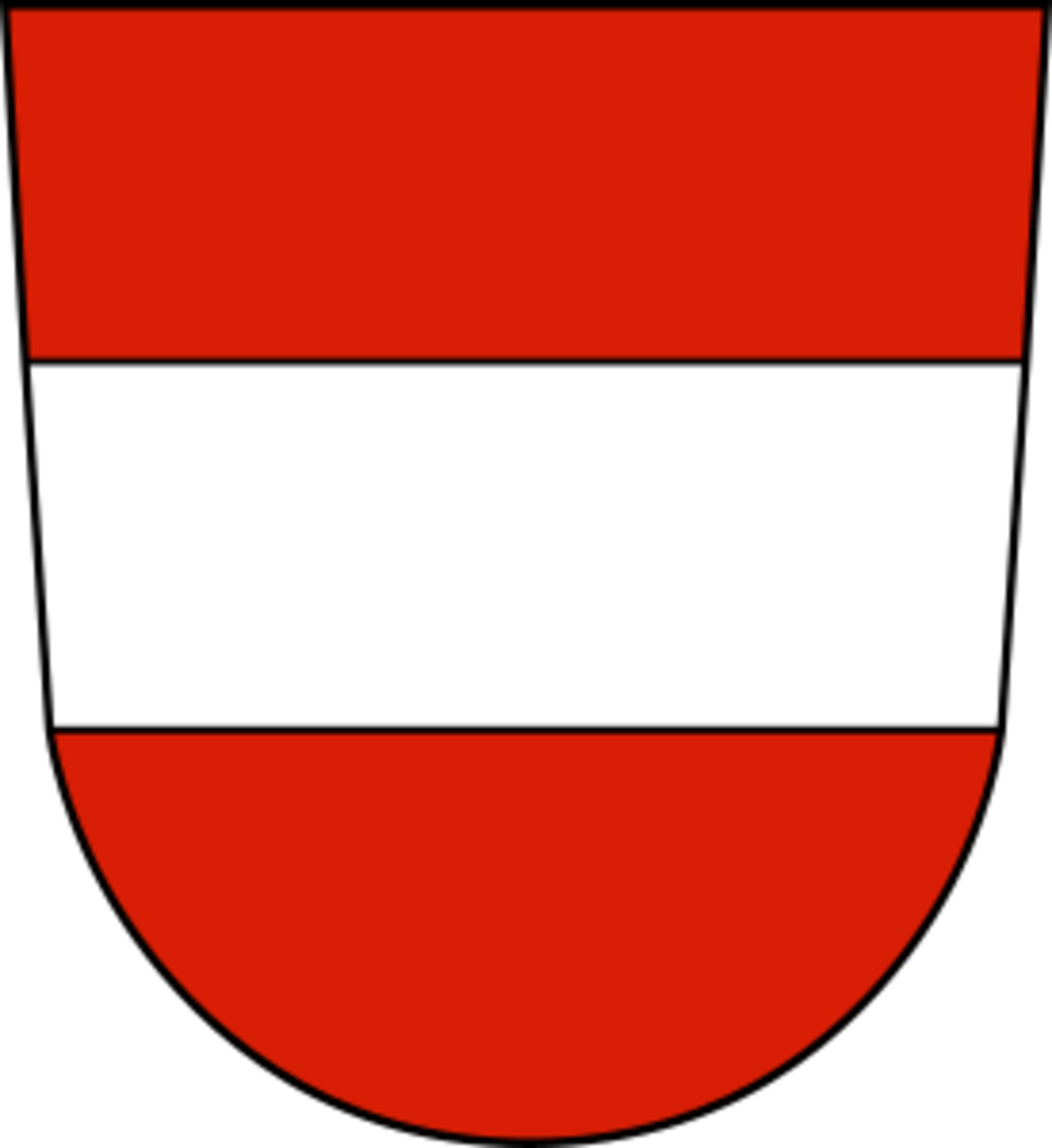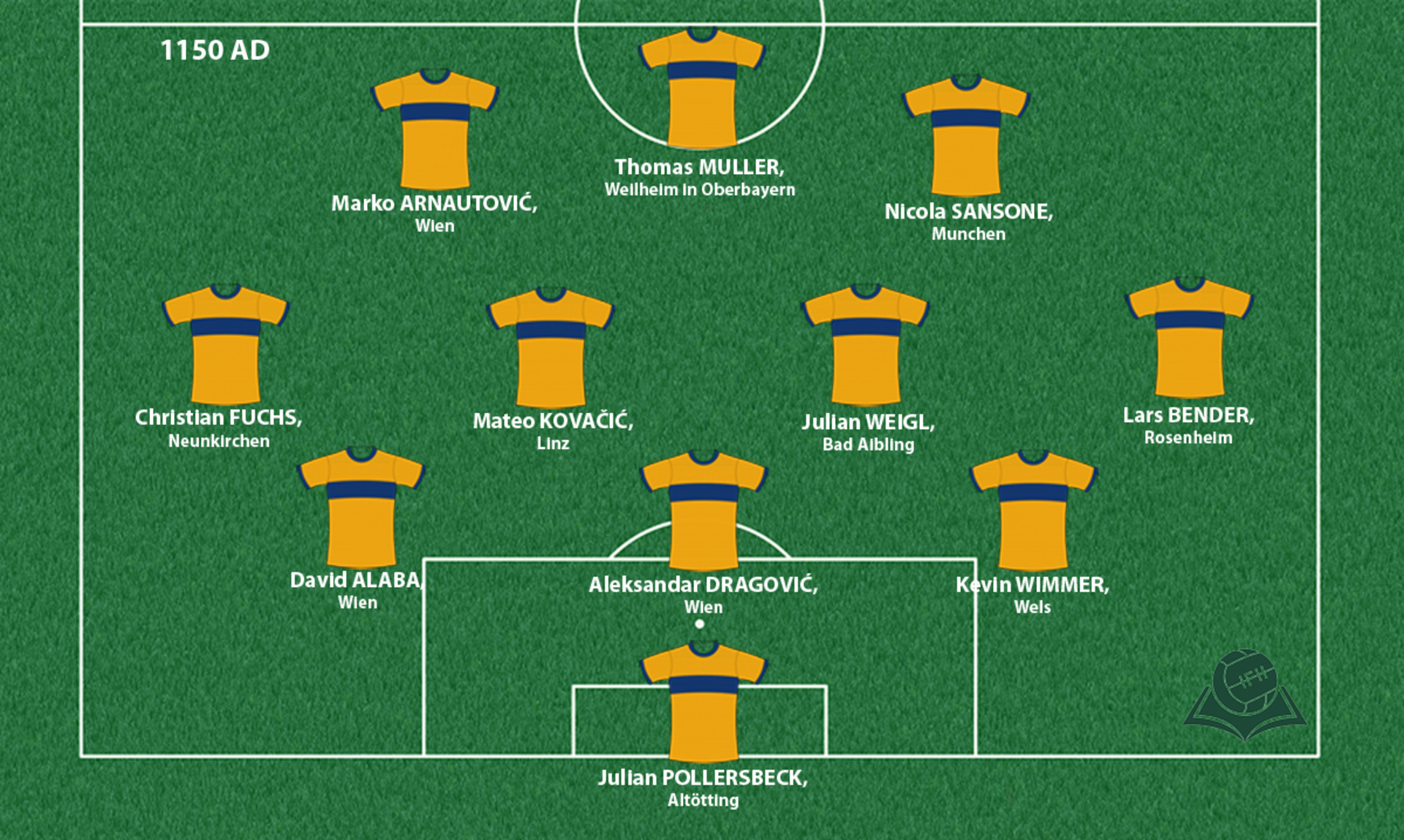The Duchy of Bavaria
Bavaria was a one of the Grand duchies within Holy Roman Empire, whose ruler had the right to be one of the electing members for the electing of the Roman (German) king, i.e. the future Emperor. In the middle of 12th the Margraviate of Austria will exlude itself from the Bavarian overlordship and will become the duchy within Empire.

Coat of arms

Shirt
| Position | First name | Last name | Mjesto rođenja | Like | Dislike | |
|---|---|---|---|---|---|---|
| GK | Andrea | LUKSE | Wien |
0 |
0 |
|
| GK | Heinz | LINDNER | Linz |
3 |
0 |
|
| GK | Julian | POLLERSBECK | Altötting |
1 |
0 |
|
| DC | Aleksandar | DRAGOVIĆ | Vienna |
7 |
4 |
|
| DC | Florian | NIEDERLECHNER | Ebersberg |
1 |
0 |
|
| DC | Kevin | WIMMER | Wels |
1 |
0 |
|
| DLC | Maximilian | WOBER | Wien |
0 |
0 |
|
| DRLC | Christopher | SCHINDLER | München |
0 |
0 |
|
| DR | Florian | KLEIN | Linz |
0 |
0 |
|
| DL | Christian | FUCHS | Neunkirchen |
9 |
5 |
|
| DL | Diego | CONTENTO | München |
1 |
1 |
|
| DL/MLC | David | ALABA | Vienna |
28 |
3 |
|
| DC/DMC | Sven | BENDER | Rosenheim |
6 |
0 |
|
| DMC | Julian | BAUMGARTLINGER | Sazlburg |
2 |
0 |
|
| DMC | Veli | KAVLAK | Wien |
0 |
0 |
|
| DMC/DC | Stefan | ILSANKER | Hallein |
0 |
0 |
|
| DMC/DR | Christian | TRASCH | Ingolstadt |
0 |
0 |
|
| DMC/DR | Lars | BENDER | Rosenheim |
7 |
1 |
|
| MC | Bastian | SCHWEINSTEIGER | Kolbermoor |
7 |
0 |
|
| MC | Florian | GRILLITSCH | Neunkirchen |
0 |
0 |
|
| MC | Julian | WEIGL | Bad Aibling |
15 |
1 |
|
| MC | Mateo | KOVAČIĆ | Linz |
20 |
0 |
|
| ML/DL | Fabian | JOHNSON | München |
0 |
0 |
|
| AMC | Mehmet | EKICI | München |
0 |
1 |
|
| AMRLC | Dominik | PROKOP | Wien |
0 |
0 |
|
| AMRL | Alessandro | SCHOPF | Umhausen |
0 |
0 |
|
| SS/FC | Thomas | MÜLLER | Weilheim in Oberbayern |
19 |
4 |
|
| SS/FRLC | Nicola | SANSONE | München |
3 |
0 |
|
| FRLC | Andreas | WEIMANN | Wien |
2 |
0 |
|
| FRLC | Lukas | HINTERSSER | Kitzbühel |
0 |
0 |
|
| FRLC | Marko | ARNAUTOVIĆ | Wien |
8 |
3 |
|
| FC | Marc | JANKO | Wien |
3 |
2 |
|
| FC | Sandro | WAGNER | München |
1 |
0 |
(Today part of: southeastern Bavaria, central and western Austria)
Between 1070 and 1180, Bavarians have often been in conflict with the Emperor, whose rule they haddisputed. During the struggles for the throne in the first half of the 12th century, the Bavarian dukes of Welfi succeeded in electing their candidate, a duke of Saxony, king, and then Emperor, opposed by the Swabian dukes of Hohenstaufen and the rulers of Waiblingen (from which the Italian name of Ghibellines for their supporters comes from). The dynastic rivalry continued, and during the reign of emperor Frederick I Barbarossa (ruled 1152 – 1190), the name Guelphs and Ghibellines gained a broader meaning and bigger importance in northern-Italian lands than they had had in German lands. The renewed conflict between the papacy and the Empire had given new proportions to the conflicts between Guelphs and Ghibellines who, from then on, have been differentiated as supporters of the papal interests or the interests of the Empire, i.e. their support of the lay, secular politics, or the papal theocracy.
During Frederick’s reign, his cousin Henry the Lion, the duke of both Bavaria (r.1156-1180) and Saxony (r.1142-1180), gained tremendous power and, because of the Emperor’s foreign policy which was focused on the Apennine Peninsula, he had held a position equal to that of the regent. However, he will soon become disobedient towards the Emperor himself, who was them forced to break his power. After him, Bavaria will be ruled by the family of Wittelsbach, which managed to hold its position from the second half of the 12th century, all the way to the 20th century, despite the fact that, during this time, a large part of the territory was governed by monasteries, dioceses, free cities, and knights of the Empire.
Great benefit from the Welfi-Ghibellines (Hohenstauffen) conflict had the Babenberg family, margraves of Austria which had been the eastern military border of Empire (germ. Osterreich) against Hungarian and Slavic invaders since 10th century. Austria was under overlordship of the Bavarian dukes. By standing on his side in a conflict against Bavarian Welf, emperor had given a rule over Duchy of Bavaria to the Babenbergs (1139-1156.). But, soon after reconciliation between emperor and Henry the Lion the title had been returned to the Welf family. However, as a result of the compromise towards the Babenbergs, the emperor had rosed the Markgraviate of Austria to the Duchy of Austria within Empire. After the Babenberg ruling dynasty had died out, and the conflict for power in the second half of the 13th century, territory became a hereditary land of the Habsburg family.
Sources
- Felipe FERNANDEZ-ARMESTO, Narodi Europe, Zagreb, 1997.
- Roberto LOPEZ, Rođenje Evrope : stoljeća V-XIV, Zagreb, 1978.
- Erich ZOLLNER, theresse SCHUSSEL, Povijest Austrije, Zagreb, 1995.
- ''Austrijanci', http://www.enciklopedija.hr/natuknica.aspx?ID=4688
- ''Duchy of Bavaria'', https://en.wikipedia.org/wiki/Duchy_of_Bavaria
- ''Gvelfi i gibelini'', http://www.enciklopedija.hr/Natuknica.aspx?ID=23920
- ''the Margraviate of Austria'', https://en.wikipedia.org/wiki/Margraviate_of_Austria
- GRB: https://en.wikipedia.org/wiki/List_of_rulers_of_Bavaria; https://en.wikipedia.org/wiki/Babenberg
